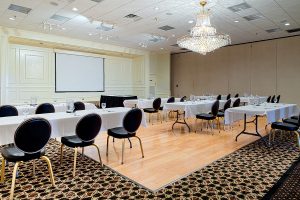 The operating challenges around budgets, resources, and legacy technology we see at the Federal level are amplified at the state and local level. Just because these groups are responsible for a smaller population does not mean their problems are smaller. On the contrary, historically low staffing levels and a geographically-limited pool of talent feed into the core challenges that all government teams face.
The operating challenges around budgets, resources, and legacy technology we see at the Federal level are amplified at the state and local level. Just because these groups are responsible for a smaller population does not mean their problems are smaller. On the contrary, historically low staffing levels and a geographically-limited pool of talent feed into the core challenges that all government teams face.
Security - Securing systems and the data that lives on those networks is now seen as a focus beyond IT. Everyone plays a role in cybersecurity, and there is a real need to update systems and processes as well as educate users.
Innovation - Since teams are so busy with day-to-day operations, stepping back to foster innovation can be difficult. Many are finding ways to make the transformation work. In fact, some of the most innovative public sector programs are happening on the local level.
Managing change - Communication is key in implementing change within small, tight-knit teams. Participation in decision making ensures that new solutions meet the needs of the workforce as well as the citizens.
Finding time for training - All of the challenges above feed into an inability to make time for training and education to keep up with the rapidly evolving technology field. Continue reading


 We've been watching the use of
We've been watching the use of  As we highlighted in the post,
As we highlighted in the post, 
 Over the past year, there has been a shift in the way government approaches the cloud. No longer are agencies asked to go "cloud first," they are now urged to be "cloud smart." This change is not just a matter of semantics; it is a different way of thinking. Rather than choosing a cloud solution to meet mandates, agencies are examining whether the cloud is the right platform for the application or system in question. Cloud Smart also means picking the right kind of cloud - public, private, or hybrid/multi cloud to meet user, administration, and security needs.
Over the past year, there has been a shift in the way government approaches the cloud. No longer are agencies asked to go "cloud first," they are now urged to be "cloud smart." This change is not just a matter of semantics; it is a different way of thinking. Rather than choosing a cloud solution to meet mandates, agencies are examining whether the cloud is the right platform for the application or system in question. Cloud Smart also means picking the right kind of cloud - public, private, or hybrid/multi cloud to meet user, administration, and security needs.
